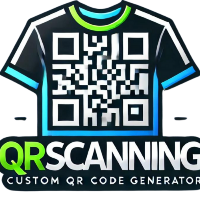
Share
QR codes, or Quick Response codes, are everywhere, transforming how we interact with digital content and communicate in a rapidly digitalizing world. From retail product packaging to advertisements in public spaces, QR codes serve as bridge tools that guide customers from physical environments to digital experiences, smoothly integrating them into their daily lives.
A QR code is a two-dimensional barcode that can store a wide variety of data, from URLs, product information, contact details, and more. These are often scanned using smartphone cameras, making them accessible to most people with smartphones. QR codes offer unrivaled versatility and convenience, which are increasingly being recognized by businesses looking to enhance their marketing strategies and customer engagement practices.
The Technology Behind QR Codes
The technology of QR codes is elegantly simple but powerful. Conceived in 1994 by Denso Wave, a Toyota subsidiary, QR codes were originally designed for the automotive industry to track vehicles and components more efficiently during manufacturing. The matrix barcode technology allows it to store data both horizontally and vertically, enabling it to hold more information compared to the traditional one-dimensional barcodes.
Each QR code is made up of black squares (modules) arranged on a white grid, which can be interpreted as data when scanned by an appropriate reader. The data stored can be read even if the QR code is partially damaged, thanks to its robust error correction capability. The three distinctive squares at the corners of QR codes help scanners determine their orientation, ensuring accurate decoding.
QR Codes in Modern Marketing
In the realm of marketing, QR codes have proven to be transformative tools. They provide an interactive element that can enrich traditional marketing materials by seamlessly connecting the physical world with digital media. For instance, adding QR codes to print ads or product packaging that link to landing pages or video content can boost customer engagement by providing a rich informational experience.
Custom QR codes have taken this a step further, with the addition of logos and color branding to align with a business’s aesthetic. This customization helps grab attention and perfects the blending of brand identity with digital interaction.
Additionally, QR codes can facilitate seamless transactions in an era where contactless payment systems are gaining ground. They're used in apps to make quick payments or even track loyalty points, providing value to both the consumer and the business owner.
Local Optimization and QR Codes
While XR scanning technology has global implications, businesses can also leverage QR codes to optimize for local searches. By embedding local keywords within digitally accessible content via QR codes, companies can enhance search engine optimization (SEO) and precisely target local consumers.
Consider a local restaurant integrating QR codes on their takeaway packaging that links to their latest menu or customer reviews. This not only encourages direct interactions but also helps in gathering location-based analytics. Businesses can get insights on customer preferences and behaviors that inform future marketing strategies tailored to local audiences.
Call to Action: Start Leveraging QR Codes for Your Business Today!
With the growing importance of QR codes across industries, now is the perfect time to implement this dynamic tool in your business strategy. Whether you're a local business seeking to expand customer engagement or a multinational company looking to streamline digital and physical interaction, QR codes offer a ready solution.
Reach out to us for a free quote and discover how customized QR solutions can elevate your business's market presence and operational efficiency. Let us guide you through understanding the technology, designing custom QR codes, and effectively integrating them into your marketing toolkit. Contact us today and take the first step towards a more interactive and engaging business future.


